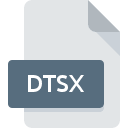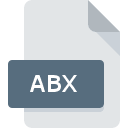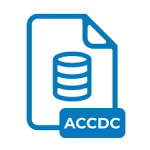.DTSX File Extension

DTS Settings File
| Developer | Microsoft |
| Popularity | |
| Category | Database Files |
| Format | .DTSX |
| Cross Platform | Update Soon |
What is an DTSX file?
A .DTSX file is a package used by SQL Server Integration Services (SSIS), a component of Microsoft SQL Server. These files contain information about data transformation tasks, including data sources, transformations, and destinations.
More Information.
The initial purpose of .DTSX files was to replace the older Data Transformation Services (DTS) technology used in SQL Server 2000. DTSX files are used to define workflows that move data between different databases, process data, and automate maintenance of SQL Server databases.
Origin Of This File.
The .DTSX file extension stands for “Data Transformation Services XML” and was introduced by Microsoft as part of SQL Server Integration Services (SSIS) with SQL Server 2005. SSIS is a platform for building enterprise-level data integration and data transformation solutions.
File Structure Technical Specification.
A .DTSX file is an XML-based file format that outlines the details of an SSIS package.
The structure includes:
- Header: Contains metadata such as version and creator.
- Connections: Definitions for data sources and destinations.
- Control Flow: Workflow of tasks and containers that dictate the order of operations.
- Data Flow: Specific data transformations and data movements.
- Event Handlers: Actions to take when events like errors or warnings occur.
- Parameters: Values that can be set externally to customize package execution.
How to Convert the File?
Windows
- SSIS Package Upgrade Wizard:
- Open SQL Server Data Tools (SSDT).
- Load your existing
.DTSXpackage. - Use the SSIS Package Upgrade Wizard to convert the package to a newer version of SSIS if needed.
- Export to Other Formats:
- In SSDT, you can export the package to different formats or tools, depending on the target system’s compatibility.
Linux
- Using Docker:
- Run SQL Server with SSIS on a Docker container.
- Copy the
.DTSXfile to the container. - Use SSIS tools within the container to convert or manage the package.
- Third-Party Tools:
- Some third-party ETL (Extract, Transform, Load) tools that run on Linux can import
.DTSXfiles and convert them to their native format. Examples include Talend or Pentaho.
- Some third-party ETL (Extract, Transform, Load) tools that run on Linux can import
macOS
- Using Docker:
- Similar to Linux, run SQL Server with SSIS in a Docker container on macOS.
- Copy the
.DTSXfile to the container. - Use SSIS tools within the container for conversion.
- Remote Desktop:
- Use a remote desktop application to connect to a Windows machine with SSDT installed.
- Perform the conversion on the Windows machine.
Android
- Remote Desktop Apps:
- Install a remote desktop app (e.g., Microsoft Remote Desktop) on your Android device.
- Connect to a Windows machine with SSDT.
- Convert the
.DTSXfile on the remote Windows machine.
- Cloud Services:
- Use cloud-based SQL Server instances with SSIS.
- Access the cloud service via a web interface and perform the conversion.
iOS
- Remote Desktop Apps:
- Install a remote desktop app (e.g., Microsoft Remote Desktop) on your iOS device.
- Connect to a Windows machine with SSDT.
- Convert the
.DTSXfile on the remote Windows machine.
- Cloud Services:
- Utilize cloud-based SQL Server instances with SSIS.
- Manage and convert the
.DTSXfile via the cloud service’s web interface.
Others
- Virtualization:
- Use virtualization software (e.g., VMware, VirtualBox) to create a virtual machine running Windows.
- Install SSDT on the virtual machine.
- Load and convert the
.DTSXfile within the virtual machine.
- Cross-Platform Data Integration Tools:
- Some data integration tools can import
.DTSXfiles and convert them to their native formats. Tools like Talend or Informatica may support this functionality.
- Some data integration tools can import
Advantages And Disadvantages.
Advantages:
- Flexibility: Can handle complex data transformations and workflows.
- Integration: Seamlessly integrates with other Microsoft services and databases.
- Scalability: Suitable for small and large-scale data integration tasks.
- Extensibility: Custom components can be created using .NET languages.
Disadvantages:
- Complexity: Can be difficult to learn and manage for beginners.
- Dependency on SQL Server: Best used within the Microsoft ecosystem.
- Performance: May require fine-tuning for performance optimization.
How to Open DTSX?
Open In Windows
- SQL Server Data Tools (SSDT): The primary tool to create, edit, and manage
.DTSXfiles. - SQL Server Management Studio (SSMS): To run and manage SSIS packages.
Open In Linux
SSIS and its tools are not natively supported on Linux. However, you can use Docker to run SQL Server and SSIS on Linux. Alternatively, you can use cross-platform data integration tools compatible with SSIS packages.
Open In MAC
Similar to Linux, macOS does not natively support SSIS tools. Using Docker to run SQL Server and SSIS is a possible workaround. You may also use remote desktop solutions to access SSIS tools on a Windows machine.
Open In Android
There are no native tools to directly open or manage .DTSX files on Android or iOS.
However, you can:
- Remote Desktop Apps: Use remote desktop applications to access a Windows machine with SSIS tools.
- Cloud Solutions: Utilize cloud-based SQL Server instances and manage SSIS packages via a web interface.
Open In IOS
There are no native tools to directly open or manage .DTSX files on Android or iOS.
However, you can:
- Remote Desktop Apps: Use remote desktop applications to access a Windows machine with SSIS tools.
- Cloud Solutions: Utilize cloud-based SQL Server instances and manage SSIS packages via a web interface.
Open in Others
For other operating systems, the primary approach would be using virtualization, containers (like Docker), or remote access to Windows environments where SSIS tools are installed.













